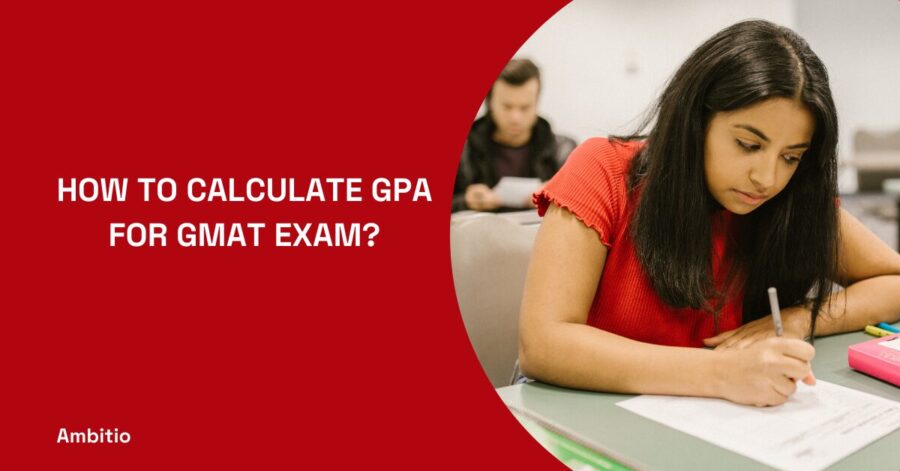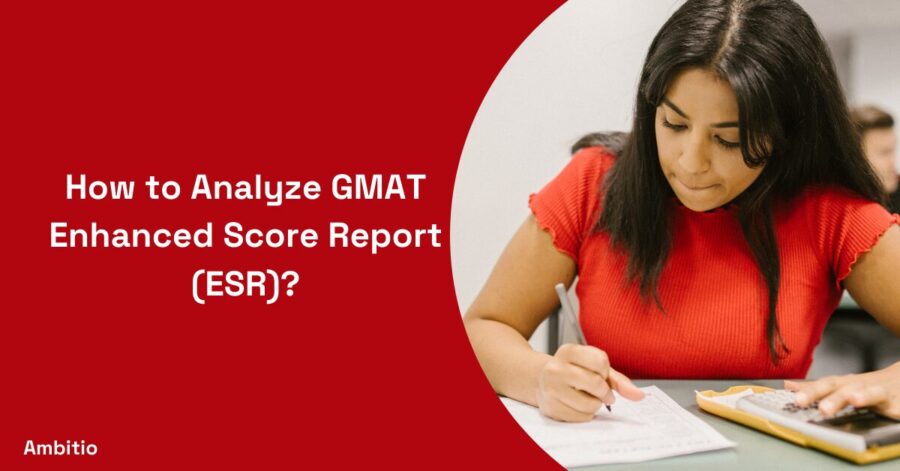23 September 2025
10 minutes read
GMAT Score History: Official Score Report of Graduate Management Admission Test for MBA Program for Indian Students

Key Takeaways
- GMAT score history reflects changing business needs; staying informed about these changes can give you an edge in your MBA journey.
- Your GMAT score is a tool, not a verdict; use it to highlight your strengths and improve your weaknesses.
- Each section of the GMAT tests different skills; understanding this helps you prepare more effectively and interpret your scores accurately.
Are you aware that every year, more than 200,000 MBA hopefuls register for the GMAT exam? For these ambitious professionals, their GMAT score is not simply a number, but rather a ticket to the doors of the world’s best business schools. However, many test-takers have trouble interpreting their scores, and recognizing how they compare to the marketplace.
Navigating the world of GMAT, IELTS, TOEFL, SAT, ACT and GRE aggregates can feel like deciphering a challenging and confusing puzzle. What exactly is a good score? How do the schools really utilize these scores? The possibilities seem infinite. But not to fret. I promise you that when it comes to understanding your GMAT score report, it will not be so chaotic.
After you conquer the GMAT or GRE, you will feel confident that you can gain some valuable intelligence about your performance and make much smarter decisions about your MBA journey. Also, do plenty of GMAT official advanced questions to increase your final score.
GMAT Score History for Business School Admission
The Graduate Management Admission Council has been administering the GMAT as part of MBA applications since 1953. The first version of the GMAT measured quantitative reasoning and verbal. Today, a GMAT score report includes a total score, as well as separate scores for each section: quantitative-reasoning, verbal, integrated reasoning and analytical writing.
If you get a good enough score, you will be eligible for the GMAT scholarships as well. Over the years the GMAT has evolved to accommodate changing needs. In 2024, students will have the option to take the traditional GMAT or the GMAT Focus Edition GMAT that weighs data insights and problem-solving skills more heavily.
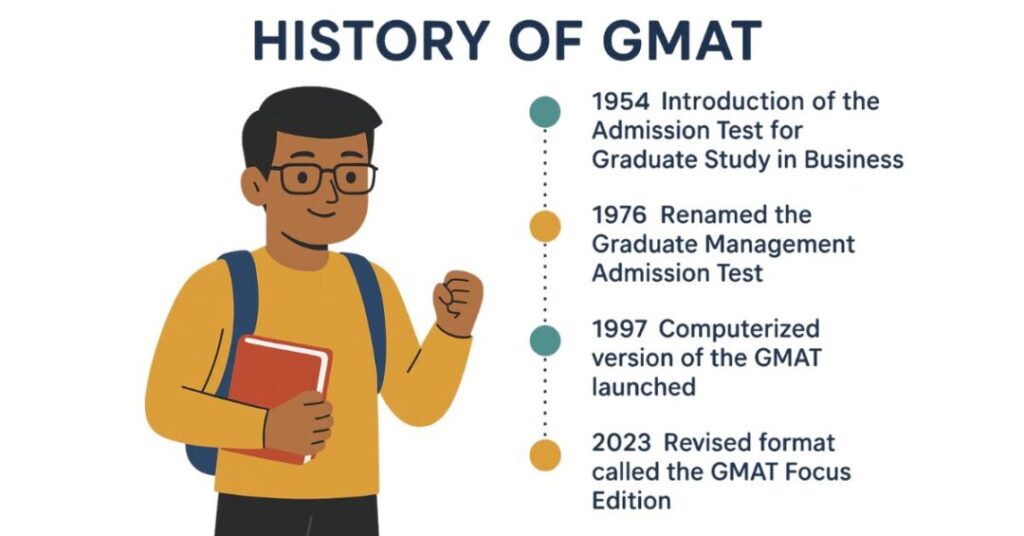
Regardless of the version of the exam, all students are assessed in critical reasoning, reading comprehension, and data sufficiency. The quantitative reasoning questions includes beginner and advanced arithmetic as well as other quantitative problems, while the verbal portion includes several types of questions that measure proficiency with language.
The GMAT has maintained its scoring system, where the score remains between 200 and 800 points. The total score calculation has become much more sophisticated. Today the GMAT score report contains percentile rankings, which reflect how you scored against test takers in the past five years. This creates added value for MBA when evaluating potential candidates.
The most recent update to the GMAT is reflective of the changing business environment. The integrated-reasoning section, a new addition to the GMAT in 2012, reflects analytical abilities that utilize data from multiple formats.
The quantitative reasoning section has incorporated even more real-life business examples; thus, even despite all of these changes, the GMAT remains a relevant tool for assessing an applicant’s verbal and quantitative-reasoning abilities that an MBA in USA or any other country would require. This has influenced the GMAT preparation time for test takers as well.
The ATGSB to 1976
Next we turn our attention to the beginnings of the GMAT, the ATGSB (Admission Test for Graduate Study in Business). This time frame from 1953 to 1976 was the formation of the GMAT. The purpose of the GMAT exam also went refinement over time.
The ATGSB came from the need for business schools to have a standardized test to help evaluate applicants. The Educational Testing Service (ETS) developed the ATGSB. The ATGSB did not gain immediate traction, with only nine schools using it at first, but it did quickly gain popularity.
By the 1960s, many schools were accepting the test as a valuable contributing factor to the process of admission. The structure of the test was much simpler back then, primarily focused on verbal and quant skills, there was no integrated-reasoning, and no analytical-writing.
Consider this interesting fact: At the beginning, test-takers were allowed to take the ATGSB at most twice a year! I cannot imagine the pressure of that—but candidates today have the luxury of scheduling their testing anytime convenient for them.
As the 1970s were entering the picture, the ATGSB continued to evolve (the scoring system of 200-800 was already being used), and the methods of tabulating, reporting, and use of scores (in reference to scores we might see on a GMAT-score report) were considerably less involved than the scores produced today in GMAT-score reports.
1976 signified the end of an era. In the same year, the ATGSB adopted a new name, the GMAT. This change highlighted its efficacy and relevance to graduate-management education around the world.
Taking the GMAT Exam from 1976 to 1996
The next phase, which runs from 1976 to 1996, was characterized by growth and refinement. GMAT format had also changed significantly. After the ATGSB was renamed in 1976, more schools adopted the GMAT into their admission processes for MBA programs.
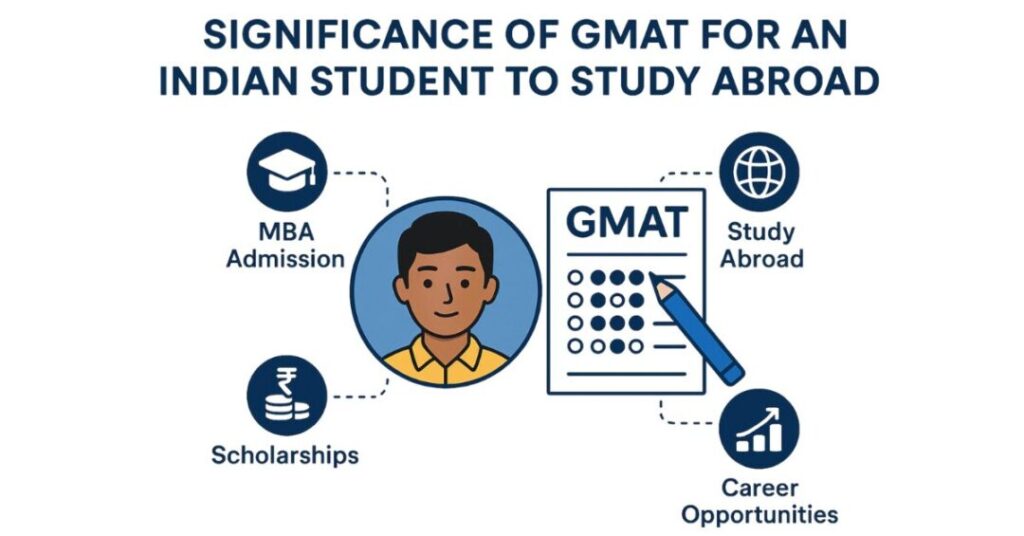
Although the general structure of the GMAT Exam remained stable and focused on verbal and quantitative skills, the content was updated to more appropriately measure skills applicable to business contexts. In the mid-1980s, GMAC also took over the GMAT from ETS, allowing for more business school input into the exam.
By the time we reached the late 1990s, the GMAT Exam was firmly established as the standard for MBA admissions, and subsequently gave more pressure on test-takers. In addition, there was a general realization that the paper version of the GMAT Exam was limiting and would be replaced with computerization planned in 1997.
1997, 10th Edition, to the Present
Since 1997, the GMAT has been caught up in a transition to the digital era. In 1997, it became fully computer-adaptive which opened new flexibility for candidates, such as choosing from expanded scheduling windows and being able to receive scores more quickly.
The 2012 addition of the Integrated-Reasoning section revised the format further to reflect the need for data analytical skill. In 2018, the GMAT shortened the test from 4 hours to 3.5 hours. Who isn’t glad to hear that?
Just this past year, GMAC has introduced the GMAT Focus Edition in 2023. This has introduced an even shorter option based on claims that it is more aligned with business today. Don’t feel too worried though, schools are still accepting the previous version as well.
Along with many of these options and variations, the 200-800 core score scale has been and remains consistent over all these years. The reporting, interpretation, and utilization of actual scores by schools is always augmented, enriching the review process for candidates. Throughout the journey, the importance of the GMAT exam remained unchanged.
Interpreting Your Total Score in GMAT Exam Sections
As you move into the process of applying to graduate B-school, it is important to understand how to interpret your overall GMAT-score listed on your official score report. The total GMAT-score ranges from a low of 200 to a high of 800 and reflects the abilities of the test taker to solve quantitative problems and reason in a verbal context.
The total score is derived from the GMAT’s verbal and quantitative sections, each of which is designed to measure different skills that would be necessary to successfully complete graduate management education. It is also important to acknowledge the other dimensions to the GMAT exam score, including reasoning scores for the Integrated Reasoning section (IR).
The IR section consists of 12 questions, and assesses your ability to integrate multi-source reasoning, graphics interpretation, perform two-part analysis and analyze a table. And do not overlook your analytical writing assessment (AWA) score! Your AWA score is calculated based on two independent ratings of your AWA.
Keep in mind that all of these scores will likely be noted by full-time MBA programs, even those that you may consider to be “prestigious” programs (e.g. Harvard Business School).
Full-time MBA programs are interested in assessing your ability to analyze data, produce and interpret graphics, as well as perform problem solving OM (Operations Management) questions by incorporating multi-source reasoning across a variety of question types, whether that be in person at Pearson VUE testing centers, or online during the ‘COVID era’ from 2012-2024.
Thus, understanding your GMAT-score is important to your positioning for master of business administration programs. Understand how to score 750 or above in GMAT to increase your chances of getting into ivy league colleges.
Interpreting Your Integrated Reasoning Score
The Integrated Reasoning (IR) section is an essential part of the GMAT exam. It includes distinctive question types used to measure your ability to interpret data from multiple sources. This ability to interpret data from various formats is a valuable skill in a business setting. For starters, gain a clear idea of integrated reasoning GMAT syllabus.
Your IR score will range from 1 to 8, and it will be reported separately from your total GMAT-score. The IR section consists of questions requiring you to engage in complex reasoning, as well as interpret data from multiple formats.
As opposed to the quant and verbal sections of the exam, the IR section is not computerized adaptive, meaning that you will all see the same number of questions, but some of you may experience an ease or difficulty to those questions. When interpreting your IR score, please take into account that on average, IR scores tend to be somewhat lower than in the quant and verbal sections.
Schools know this and will view it appropriately. However, if you send your GMAT score to schools, they will see your IR score in the same score report as your total GMAT score. Another note is that the integrated reasoning section did not exist prior to the 2012 GMAT exam, so if you report your scores from prior to 2012, you may not see those IR scores.
As you prep, focus on strengthening your ability to reason quantitatively across presented data, as this skill will serve you very well beyond just preparing you for the GMAT.
Interpreting Your Verbal Reasoning Score
The Verbal Reasoning section of the GMAT is a major part of the exam’s structure. While it does assess your grammar, its true purpose is to test your language skills and ability to think critically and analyze written material.
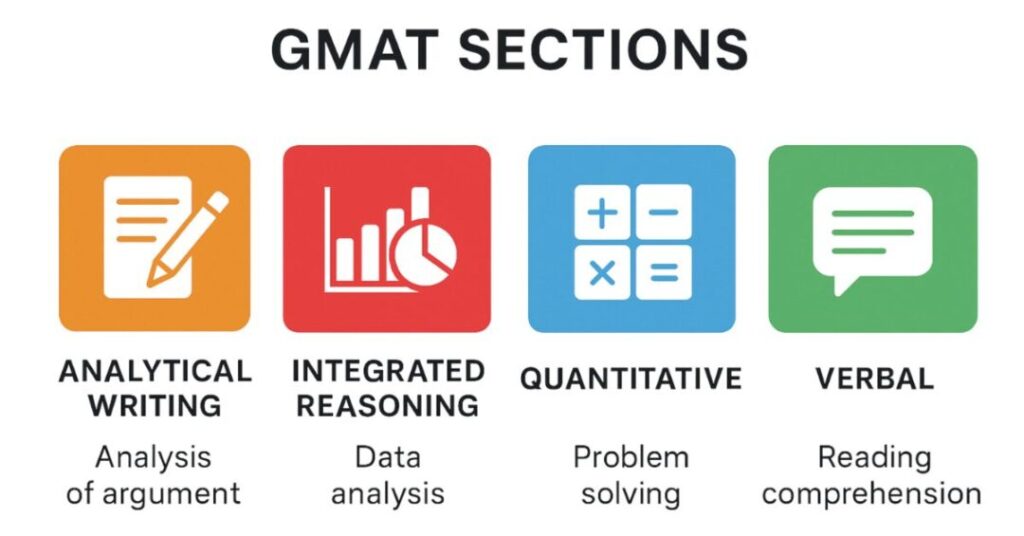
Your score for verbal reasoning will be on a scale of 0 to 60, but you will also see a percentile ranking. You need to understand how many questions there are in GMAT verbal reasoning as well.
The Verbal Reasoning section includes three types of questions—Reading Comprehension, Critical Reasoning, and Sentence Correction. Each of these question types assesses different sets of skills, everything from reading and understanding complex texts, to spotting logic and reasoning flaws within arguments.
The types of questions you encounter in the verbal section emulates the type of analysis students will need to engage in at B-school and throughout their careers. When you interpret your score, consider both the numerical and percentile values as feedback on your performance.
Any scores in the 40s are mostly viewed as ‘strong,’ but you should always check the reporting trend in average scores for the schools you are targeting.
Keep in mind, slightly unrelated to the algebra or problem solving realms and traditional exam structures, your verbal performance on the GMAT, alongside the quantitative section, will serve as the basis for how the test generates a standardized total score.
This means that while it is not just algebra or problem-solving, the reasoning and language skills you employ in verbal reasoning will still contribute to your overall GMAT performance.
Interpreting Your Quantitative Reasoning Score
The Quantitative Reasoning score represents a key component of your profile as a GMAT test-taker, as this score indicates your ability to analyze data and apply your mathematical skills to business-related questions. Make sure to use the right GMAT books for the prep.
The Quantitative Reasoning score is awarded on a scale of 0 to 60, as well as a corresponding percentile rank. This section tests two areas: problem-solving skills, and data interpretation skills. Unlike sentence correction problems in the verbal section, typically you will find there is only one correct answer option in the quant section.
The score reflects the number of correctly answered questions, with the difficulty of the questions also having an impact. It is important to take both the number of questions answered correctly into consideration as well as the percentile rank when interpreting your score.
A score in the mid-40s would generally be considered competitive, but be sure to check the average scores for the business school programs you are applying to. Remember, the GMAT is computer-adaptive, so you can’t go back for question review during the test.
A final note on the Quant section: this and all sections of the GMAT are scored in a computer-adaptive format meaning that once you select an answer for a question you are unable to go back and re-evaluate your answer. Thus, the ability to test smartly on this section – as well as the GMAT as a whole – is critical.
You will be compared to a large test-taking population, so if you find yourself stuck on a question and don’t arrive at an answer, it will be most productive to put the question out of your mind and continue moving through the questions while optimizing your scoring through your performance and answer accuracy.
Interpreting Your Analytical Writing Assessment Score
The AWA is scored on a scale from 0 to 6, based on a 30-minute essay in which you are asked to analyze an argument. Two independent readers will read and score your essay. Less emphasized than the Quant and Verbal scores, it is still a relevant score to consider. Generally, a 4.0 or above is a good score.

Business schools rely upon the AWA score, in part, to assess your critical thinking and writing ability, which are essential skills to succeed in an MBA program. When looking at the AWA score, dont be concerned about whether you are agreeing or disagreeing with the argument that you are analyzing. It’s really about how well you are able to analyze an argument and articulate your thoughts.
Conclusion
GMAT test scores are relevant, but they are not definitive. Your profile is a portrayal of what skills you have, not your complete potential.
Business schools want more than numbers. They are looking for thinkers and problem-solvers who can respond and articulate ideas around in-the-moment complexities. Your GMAT score indicates a portion of that, but it is only one part of your story.
So break down these scores, identify strengths and weaknesses, and put it into perspective. Don’t let it pull you into an obsessive cycle. Instead use the scores to further refine your skills and clarify your unique value. Keep in mind, the point is not just to get into business school; it is to excel. Your GMAT score at the beginning is only a stepping stone into your overall education journey.
Master the GMAT and pave your way to MBA excellence with Ambitio. Our platform offers in-depth study materials, practice questions, and tailored feedback, focusing on the areas you need to strengthen to boost your score and secure your place at a top business school.
FAQs
How long are GMAT scores valid?
GMAT scores are valid for 5 years from the test date.
Can I retake the GMAT if I’m not satisfied with my score?
Yes, you can retake the GMAT after a 16-day waiting period, up to 5 times in a rolling 12-month period.
What’s a good GMAT score for top MBA programs?
While it varies, most top programs look for scores of 700+, but remember, they consider your entire application.
How does the GMAT compare to the GRE for MBA admissions?
Most business schools now accept both, but the GMAT is still preferred by some for its business-specific focus.
Is the Integrated Reasoning section as important as Quant and Verbal?
While not as heavily weighted, IR is gaining importance as it tests skills relevant to today’s data-driven business world.
How much does the AWA score matter in MBA admissions?
The AWA is less crucial than Quant and Verbal, but a very low score could be a red flag for admissions committees.
Can I choose which scores to send to schools?
With GMAT Score Select, you can choose which scores to send if you’ve taken the test multiple times.

You can study at top universities worldwide!
Get expert tips and tricks to get into top universities with a free expert session.
Book Your Free 30-Minute Session Now! Book a call now















